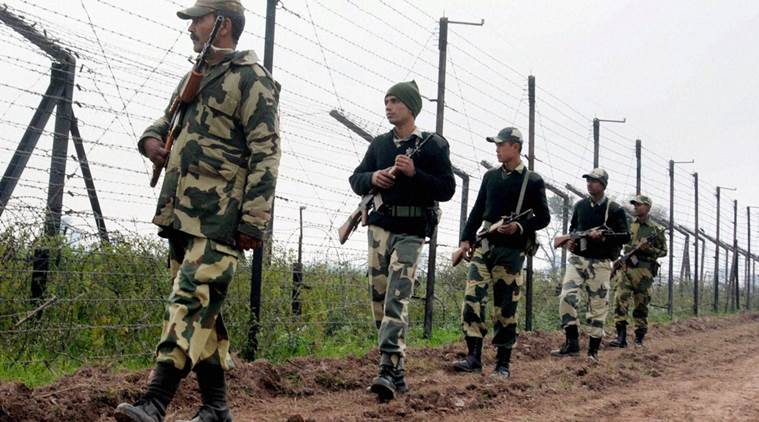By PTI |New Delhi |Updated: March 4, 2019 4:40:10 pm
Electronic surveillance of Indo-Bangla border to begin on Tuesday
The BSF is responsible for safeguarding the 4,096-km-long international border with Bangladesh. At various places, it is not possible to erect border fences due to geographical barriers, the statement said.

A “highly porous” riverine section of the Indo-Bangladesh border in Assam will be put under electronic surveillance from Tuesday in a bid to check illegal immigration and smuggling of arms, ammunition, drugs and cattle, the Union Home Ministry (MHA) said Monday.
The “smart fencing” will be operationalised in the 61 km riverine section of the international border in Dhubri district of Assam where the Brahmaputra river enters into Bangladesh.
The project, BOLD-QIT (Border Electronically Dominated QRT Interception Technique), under the Comprehensive Integrated Border Management System (CIBMS), will be inaugurated by Union Home Minister Rajnath Singh. It will cover the India-Bangladesh border in the area which consists of ‘char’ (sand islands) and innumerable river channels, which makes border guarding a daunting task, especially during the rainy season, a statement by the MHA said.
To overcome this problem, the Ministry of Home Affairs had in 2017 decided to employ a technological solution besides the physical presence of Border Security Force (BSF) personnel.
In January 2018, the information and technology wing of the BSF undertook project BOLD-QIT and completed it in record time with the technical support of various manufacturers and suppliers.
BOLD-QIT is a project aimed to install technical systems under the CIBMS, enabling the BSF to equip the Indo-Bangla border in the unfenced riverine area of the Brahmaputra and its tributaries with various kind of sensors.






































No hay comentarios:
Publicar un comentario